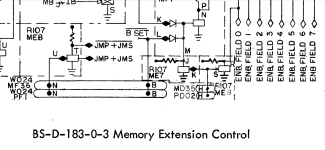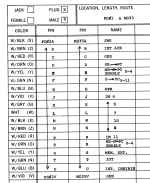antiquekid3
Veteran Member
I was reviewing the F-87 print set in hopes to learn more about the Straight-8's memory extension to see the likelihood of recreating it (and the Type 184 memory modules) for those of us with 4k Straight-8s.
In the print set, PD02/MD35 pin H ends up driving ENABLE FIELD 0. I assumed this might have been for enabling field 0 with no memory extension.

But then I looked at the signal on the line...

To my surprise, it's OPR, which is asserted during an operate instruction.
That makes very little sense to both Vince and myself. What about field 0 should have a dependence on OPR?
Perusing the 183 description as well as Operate's description did not suggest anything obvious to me. Maybe I missed something.
In the print set, PD02/MD35 pin H ends up driving ENABLE FIELD 0. I assumed this might have been for enabling field 0 with no memory extension.

But then I looked at the signal on the line...

To my surprise, it's OPR, which is asserted during an operate instruction.
That makes very little sense to both Vince and myself. What about field 0 should have a dependence on OPR?
Perusing the 183 description as well as Operate's description did not suggest anything obvious to me. Maybe I missed something.
